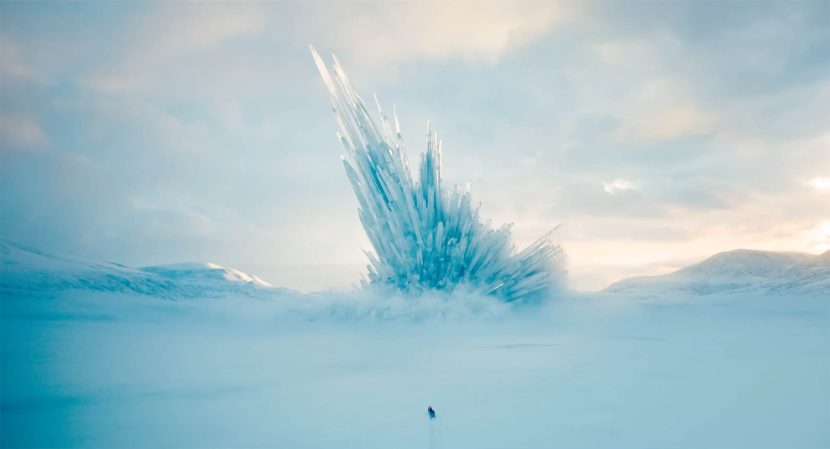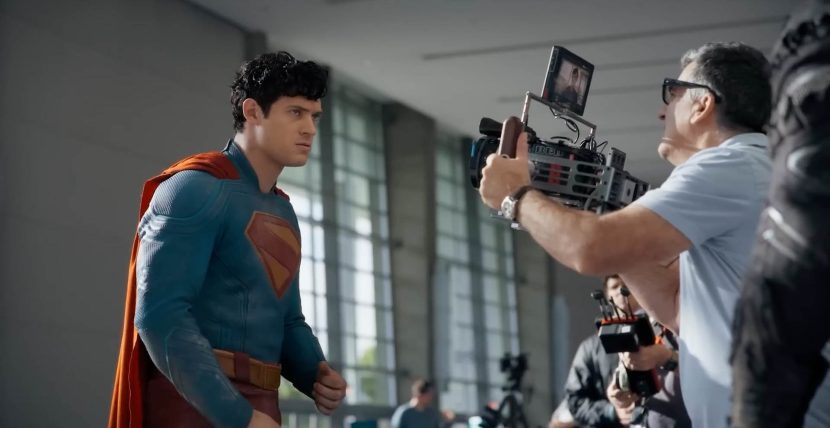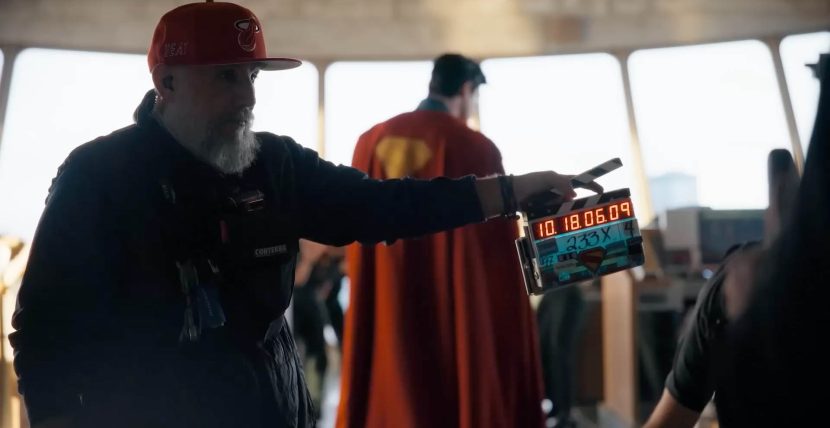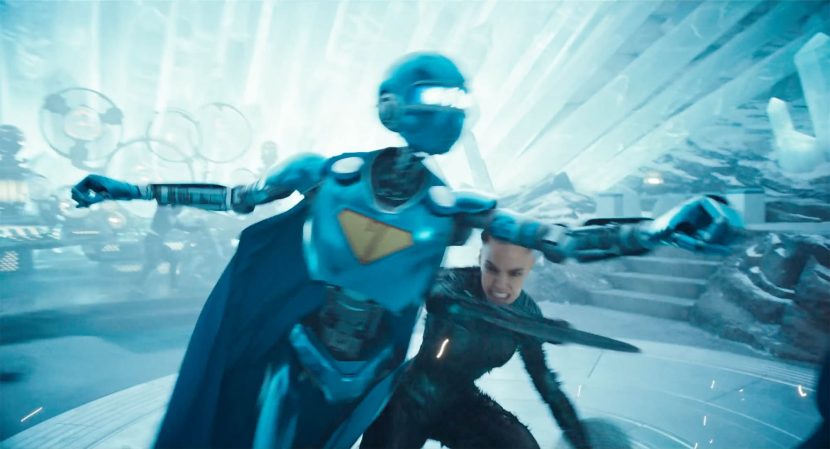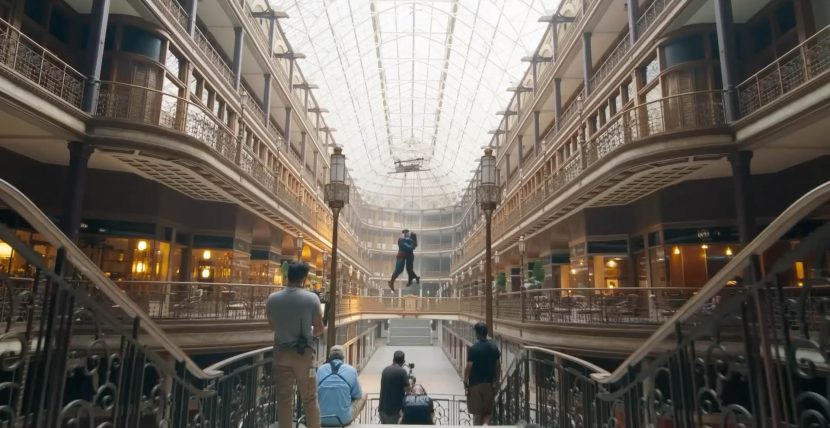For James Gunn’s Superman, Framestore reunited with the director and production VFX supervisor Stéphane Ceretti, bringing their trademark blend of creature expertise, rendering innovation, and character-driven animation to some of the film’s most memorable sequences.
In our latest fxpodcast, we sit down with CG supervisor Kevin Sears and animation supervisor Loic Mireault to unpack their contributions, from the fan-favourite Krypto the Superdog to the crystalline Fortress of Solitude, Superman’s robots, and a pioneering use of Gaussian Splats (4DGS) to realise the Kryptonian holograms.
https://youtu.be/6sTXgYs66z8
Krypto: a superdog with real canine charm
Perhaps the breakout star of the film, Krypto balances superhero spectacle with the messy energy of a real terrier. Framestore drew direct inspiration from James Gunn’s own dog, Ozu, beginning with photogrammetry scans and hours of reference footage provided by the director himself.
“The goal,” Mireault explained, “was for James to see his dog on screen. Every block of animation was paired with reference of Ozu doing something similar—biting an ankle, terrorizing a cat, or tearing around the backyard.”
Krypto’s model began with Ozu’s facial subtleties, then evolved into a larger snow-dog design that retained the terrier’s frenetic energy. Framestore also faced the added challenge of giving Krypto his cape, an iconic but physics-defying element that required creature FX constraints to keep it heroic without breaking believability.
Fortress of Solitude: nostalgia meets innovation
Framestore’s work extended to Superman’s legendary Fortress of Solitude, blending location plates from Norway with extensive CG extensions. The art department provided Unreal flythroughs and resin crystal set pieces, which Framestore expanded into soaring crystalline structures.
“The lower half of the set was plate,” Sears said, “but everything above human height was digital.” Matching the resin crystals’ optical qualities proved vital, not just to integrate actors but also to handle reflections from the chrome-like Superman robots built by Legacy Studios.
Those robots, partly performed with animatronics on set, were replaced in CG for reflection cleanup and creative flexibility. Framestore carefully matched the puppeteered performances to preserve their quirky mechanical personality, down to imperfections in the metalwork.
Holographic parents: gaussian splats in action
One of the most technically daring achievements was Superman’s holographic parents, created using 4D gaussian splats. Working with Infinite Realities in the UK, Framestore captured multi-camera performances that could later be “refilmed” digitally.
Unlike polygonal CG models, gaussian splats reconstruct volumetric ellipsoids per frame, allowing Framestore to move virtual cameras through performances without motion control rigs. “It was like theatre in the round,” Sears noted. “We could shoot around their heads, glitch the data for story beats, and still retain the exact performance of the actors.”
This approach gave the holograms their unstable, corrupted feel, something no 2D comp trick could convincingly achieve, while opening the door to future volumetric performance capture workflows.
Nanite engineer vs. robots
The Fortress battle sequence featuring the Nanite engineer tested Framestore’s rigging, FX, and animation collaboration. Using stunt actor choreography as a base, animators pushed the robots into dynamic but still believably mechanical motion. Houdini-driven nanite effects allowed the engineer’s body to sprout weapons, tendrils, and spikes, all while interacting seamlessly with CG robots and plate sets.
“It was a constant balance between dynamic human movement and robotic limitation,” Mireault said. “And we had to make every cut, tear, and cape interaction feel physically grounded.”
Rendering challenges
From white fur on white snow to refractive crystals, Framestore’s proprietary renderer ‘Freak’ was pushed to new limits. White fur proved especially expensive to render, while the Fortress required pre-processed refraction passes to manage crystal bounces.
“We may have set some Framestore records for render time at 4K,” Sears laughed, highlighting just how computationally heavy the sequences were.
A reunion with gunn and ceretti
Superman marked a continuation of Framestore’s successful collaborations with Gunn and Ceretti, following Guardians of the Galaxy Vol. 3. With Krypto capturing hearts worldwide, and inspiring a serious real-world uptick in dog adoptions, the team’s work resonated far beyond the screen.
As Mireault summed up: “James didn’t want Krypto to feel like a talking animal—he wanted Ozu, his dog, with superpowers. And that clarity gave us the foundation for everything.”
Listen to the full fxpodcast episode (or watch the full Youtube version above) with Framestore’s Kevin Sears and Loïck Mireault for an in-depth look at the artistry and technology behind Superman’s most memorable VFX moments.

